Hi friends,
I took last week off from writing my Tuesday letter, the first time I’ve done so, because I was feeling a little overwhelmed. It’s a busy time of year for me and I was being pulled in many different directions by competing demands on my time. When this happens, I need to decide how to segment my work into manageable chunks. It’s a way of dealing with that avalanche feeling of having too much to do and not enough time.
It got me thinking about times when I’ve felt overwhelmed in my art. Sometimes the music I’m working on can feel so challenging I doubt I’ll ever be able to play it. It may come as a surprise to some, but even those of us who have been making music our entire lives have moments of serious doubt. When this happens, I have to break down the music I’m learning into the smallest of components and master each part separately. Only then can I put the pieces back together, bit by bit, to make a whole.
The idea of fragmentation is not only helpful for learning and practicing music. It can be an important tool for artists and composers when making art. One of many techniques I use when composing music is something I call “defamiliarization.” For me, it is the act of taking something familiar, and making it seem unfamiliar. You can do this by magnifying something, or by showing only a small part of it.
I got the idea from the Highlights children’s magazine that is sometimes found in the lobbies of doctors offices. When I was young, my father had copies of Highlights in his chiropractic office. I used to read them all the time. Sometimes, at the back of the magazine, they would have photograph of something that was only a fragment of what you were looking at, usually highly magnified, to the point where you could no longer recognize it. The magazine asked you to guess what it was you were looking at. It might be the legs of a bumble bee, magnified 50 times. It could be the beak of a bird, or the ear of a kitten. It was always something very familiar, but presented in a way that was unrecognizable.
I wrote a piece of music ten years ago where I took five familiar rock songs and lifted fragments, making them unrecognizable to varying degrees, and then used that source material to compose completely new duos for flute and saxophone. If you know what to listen for, you can hear the fragment from the original. These fragments are often hidden in ways that are not quite a quote of the music, but strange reworkings of the material. I called the short series of pieces analecta, which is defined as “excerpts from a literary work.” You might be able to hear the opening of Radiohead’s “Everything In Its Right Place” in the second movement, titled “Everything.” It’s probably the most recognizable of the five fragments I used.
Here’s the original Radiohead:
It’s a way of using musical fragments as literal building blocks in the compositional process. My goal was to create an entirely new piece, one that is dramatically different than the source material.
I began thinking about this piece of music again after hearing a lecture at PMAC on Friday. Artist Eric Gold was speaking about his art, particularly a new project called “Growing Up Portsmouth.” The project is a series of community-created portraits of individuals who are a part of Portsmouth’s story over the past fifty years. I’m honored to have my portrait included in the exhibit, among twelve others.
This portrait is made up of 100 small rectangles, ten rows of ten, each painted by a different person. It utilizes a technique akin to the “defamiliarization” I use in composition. Each painter - not necessarily an artist, but often a community member who is just attending a painting session with many others - is given a blown up fragment of a photograph, and is asked to paint that fragment. You can see how different the paintings of each small tile are when you see them close up, side by side. Each painter has a unique approach, including the high school student who painted one square of my hair bright red.
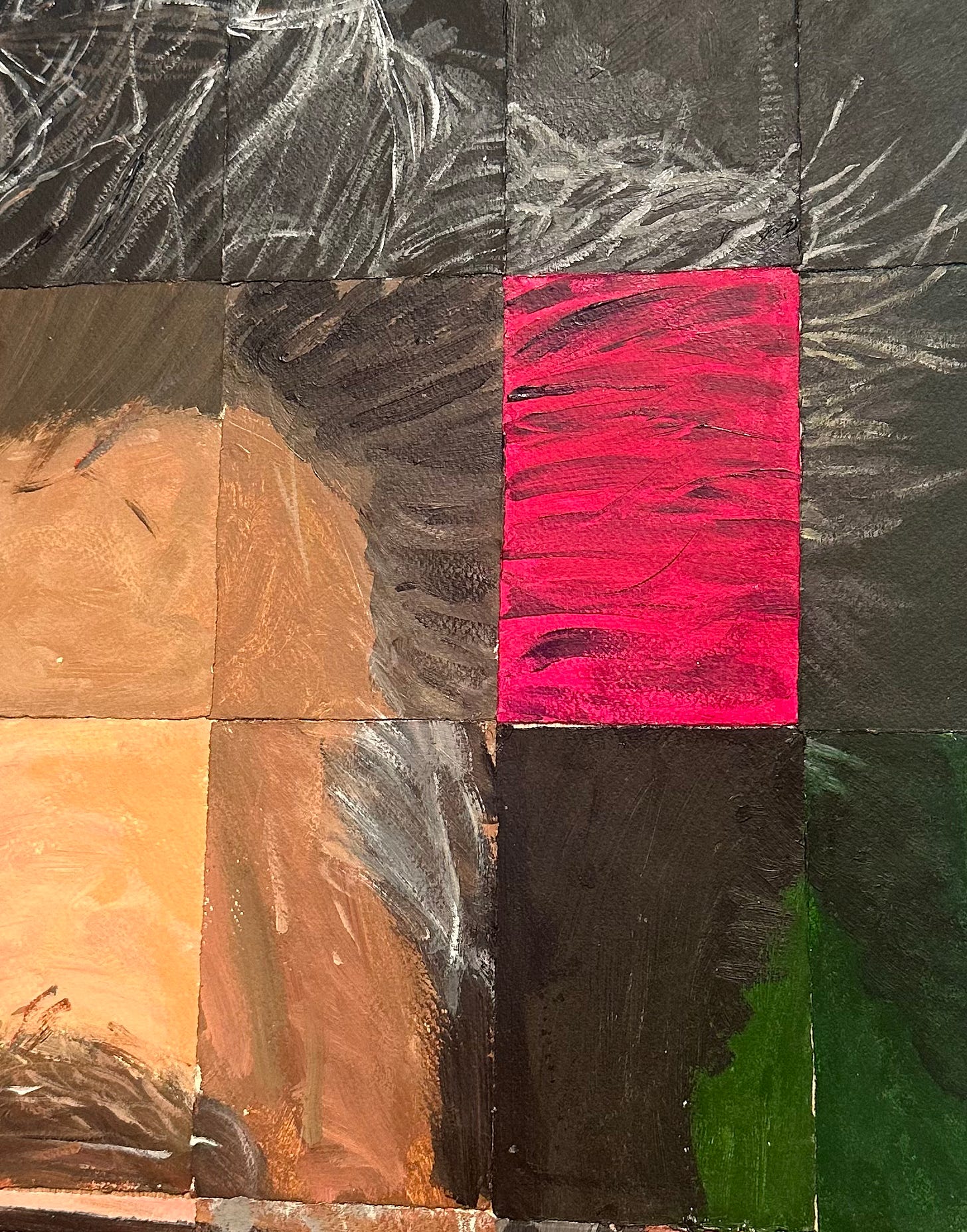
When not confronted with having to paint the entire representation of someone’s face, even people who never paint can come up with a creative tile that works within the whole. Here is a square that was being painted on Saturday morning at a workshop led by Eric Gold. We were making a portrait of my wife, Katie.
The fragment doesn’t give you enough information to know you are creating part of a portrait. You might not even know what it is you are painting. As the pieces begin to come together, a picture starts to materialize.
Eric said something at his Friday lecture that stuck with me. I can only paraphrase, but he essentially said that when presented with a small fragment to paint, most people become much more comfortable. People who would never consider attempting to paint an entire portrait are willing to take the leap when it is just a small tile, and they are not responsible for the whole. The end result of the efforts of many amateur painters can be stunning.
Starting with small fragments can be an entry point. People are sometimes resistant to the idea of embarking on a creative journey because it just seems too daunting. If you don’t self-identify as an artist, whether a painter, musician, or other, it can be difficult to see yourself creating art successfully. A small step, like painting a small rectangle that seems abstract, but is in reality a tiny piece of a larger whole, might be what it takes to get started.
You could adopt this worldview when embarking on any learning experience. Remove the pressure of having to do everything all at once. Just take that first, small step. And when your contribution is combined with the efforts of others - in a painting, or a music ensemble - true magic can happen. You might just find yourself making music. Making art (one square at a time). Dancing. Singing.
Being creative.
~Russ


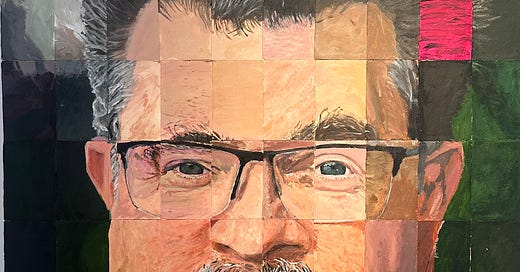


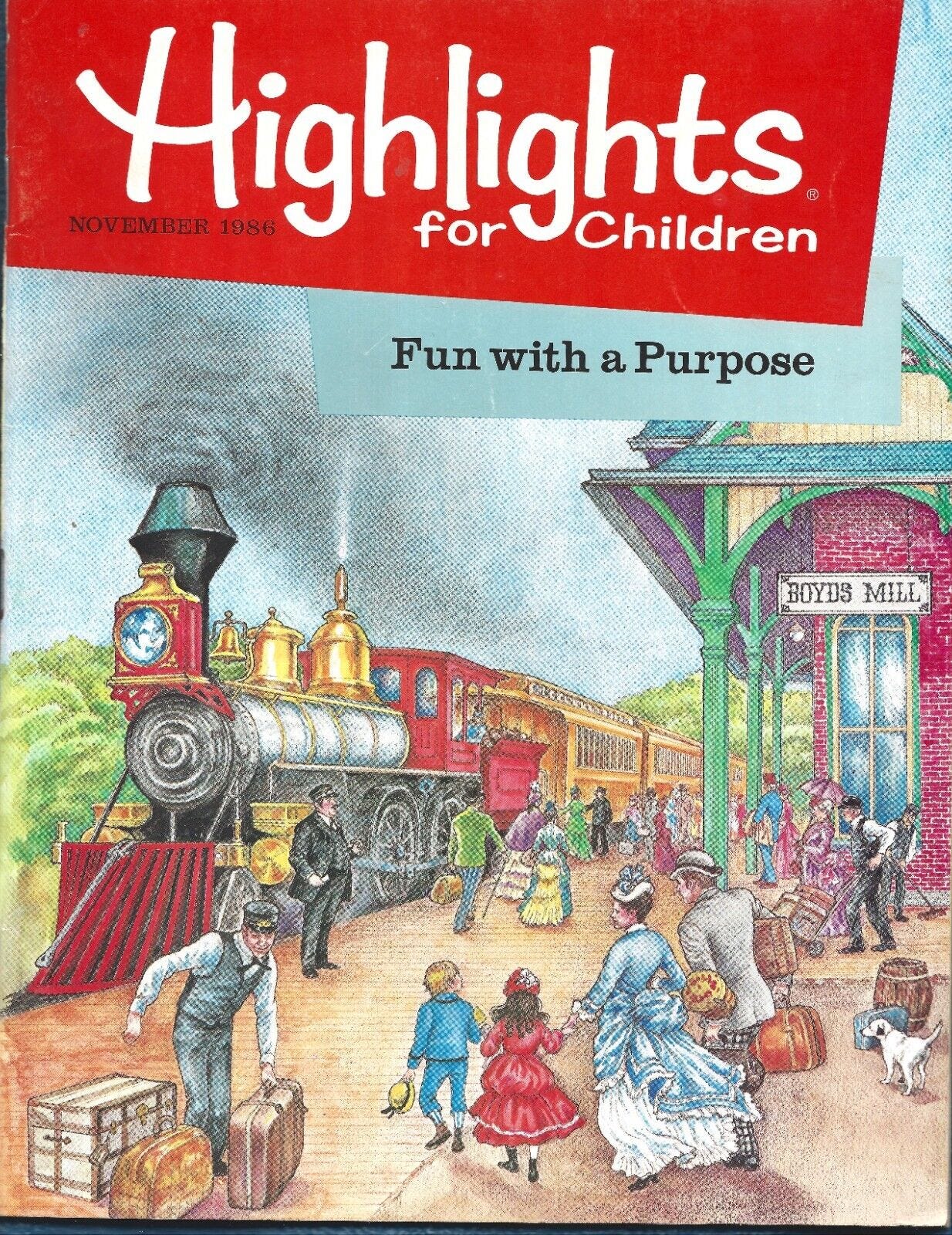


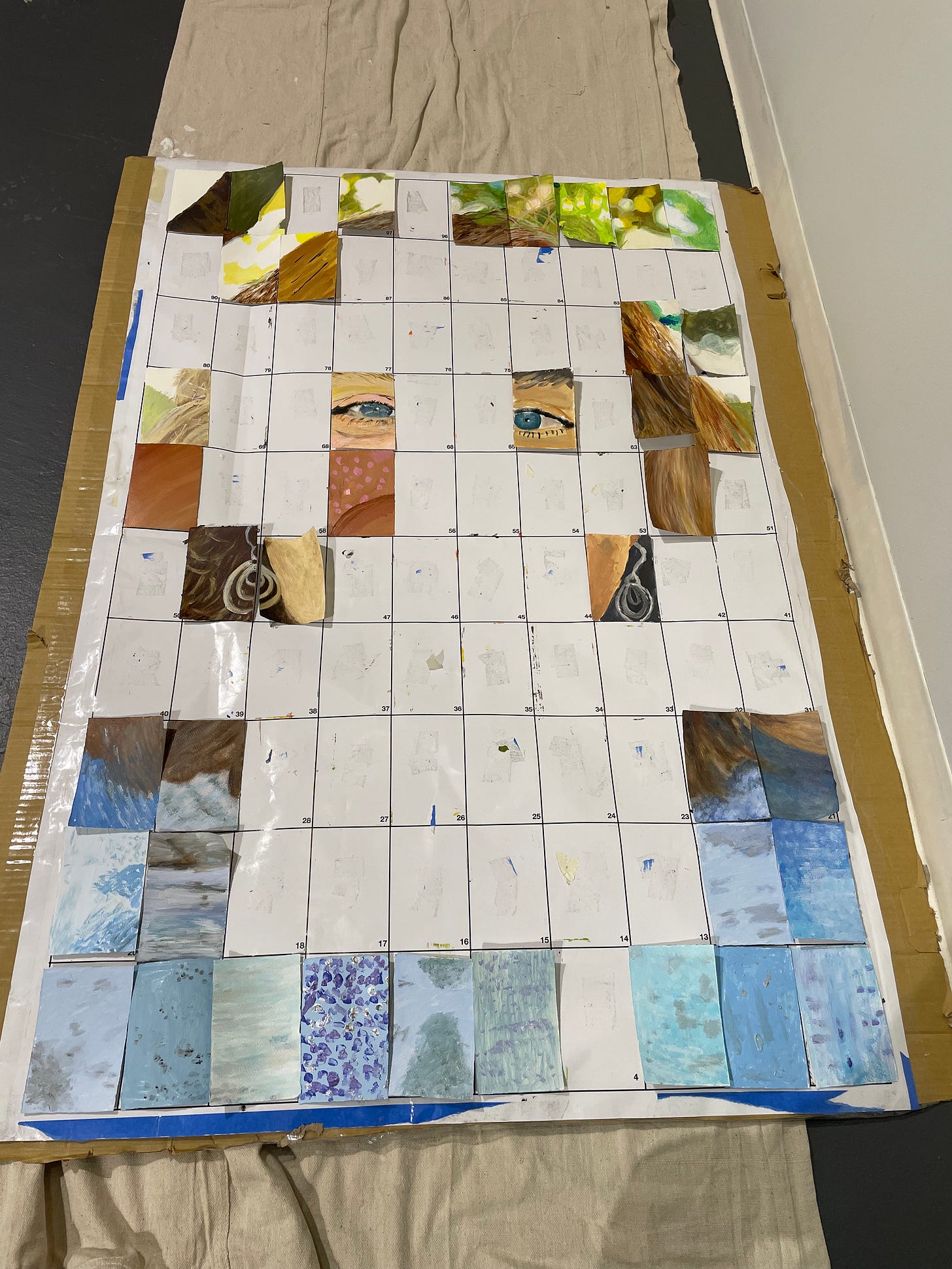
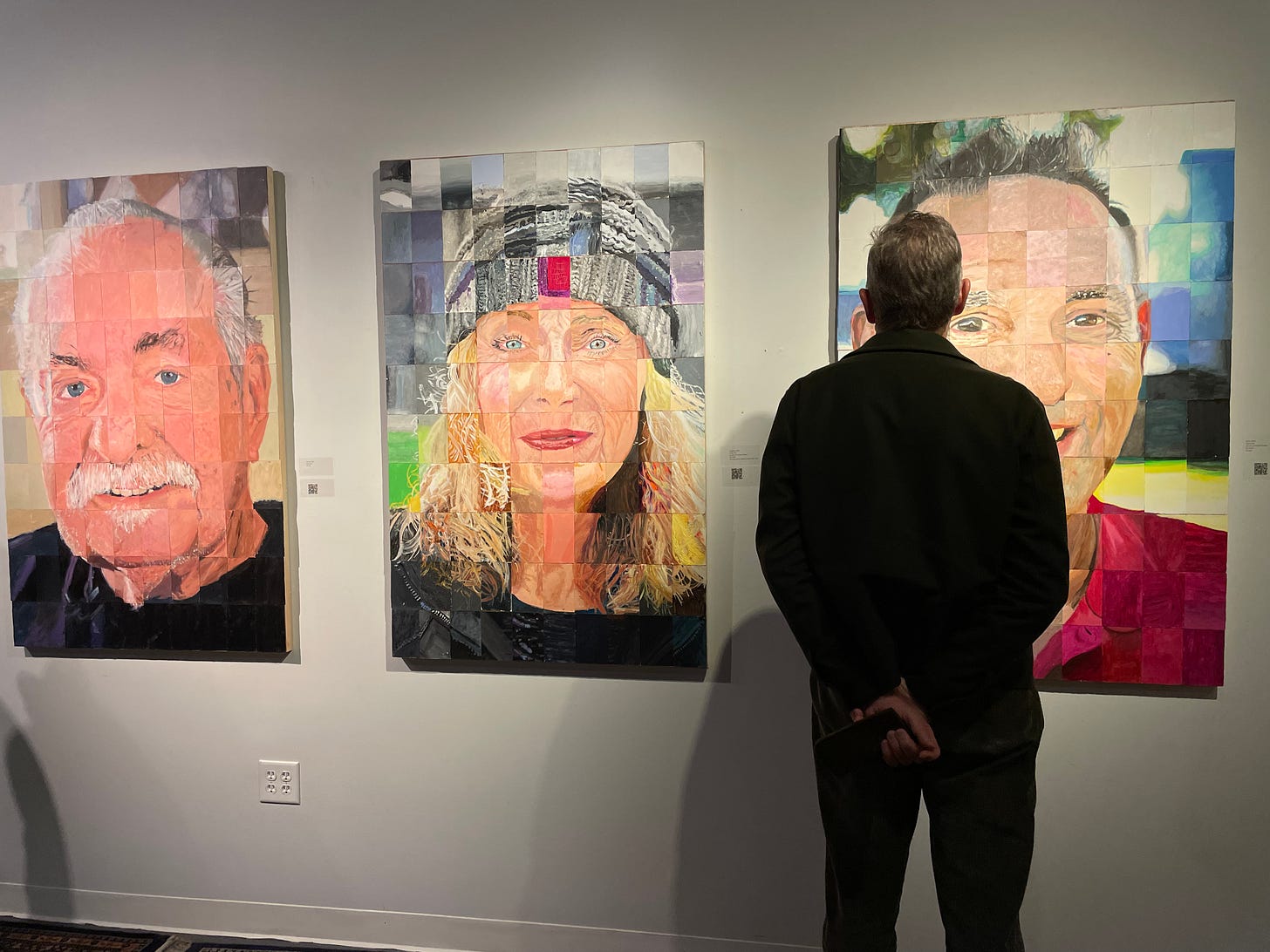
What a creative, fun and doable exercise! Love it. Coming in to actually SEE this!
Thanks, Russ! Really enjoying your creativity.
Eric’s presentation was very inspiring, I am thankful that I was able to participate and paint a square of Katie’s photo. I feel creative !